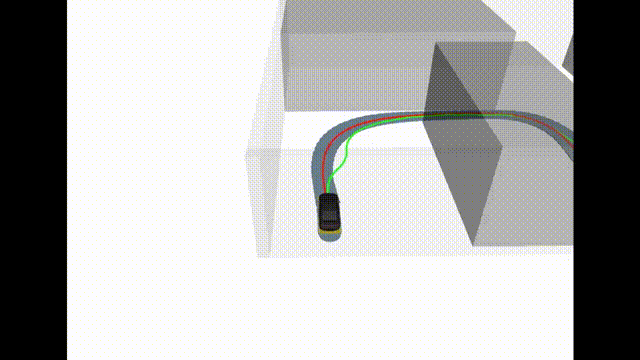Safe and efficient trajectory optimization for autonomous vehicles using b-spline with incremental path flattening.
 Trajectory Optimization
Trajectory Optimization🧾 Introduction
- B-spline-based trajectory optimization is effective in robotics due to its computational efficiency and convex-hull property, especially for quadrotors.
- However, applying B-splines to autonomous vehicles (AVs) is challenging due to rectangular body shapes and kinodynamic constraints.
- This study proposes a novel approach that overcomes these challenges for AV trajectory optimization.
⚙️ Method
- The proposed method integrates three components: Incremental Path Flattening (IPF), a disc-type swept volume (SV) estimation, and kinodynamic feasibility constraints.
- IPF flattens paths by increasing curvature penalties around collision areas, enabling collision-free path shaping.
- A disc-type SV model reduces over-approximation and allows efficient navigation in narrow spaces. Clamped B-spline curvature constraints are introduced to ensure kinodynamic feasibility, including limits on velocity and acceleration.
✅ Result
- In simulation, the proposed method outperformed state-of-the-art baselines in path safety and efficiency.
- Real-world experiments with an AV confirmed that the method’s tracking performance aligned with simulation results.
- The approach proved effective in handling both collision avoidance and dynamic feasibility in constrained driving environments.